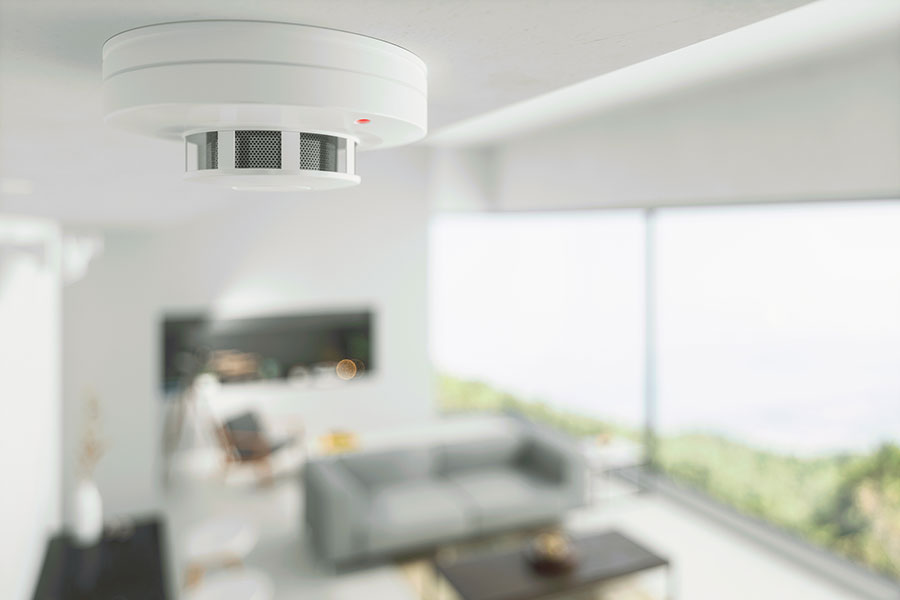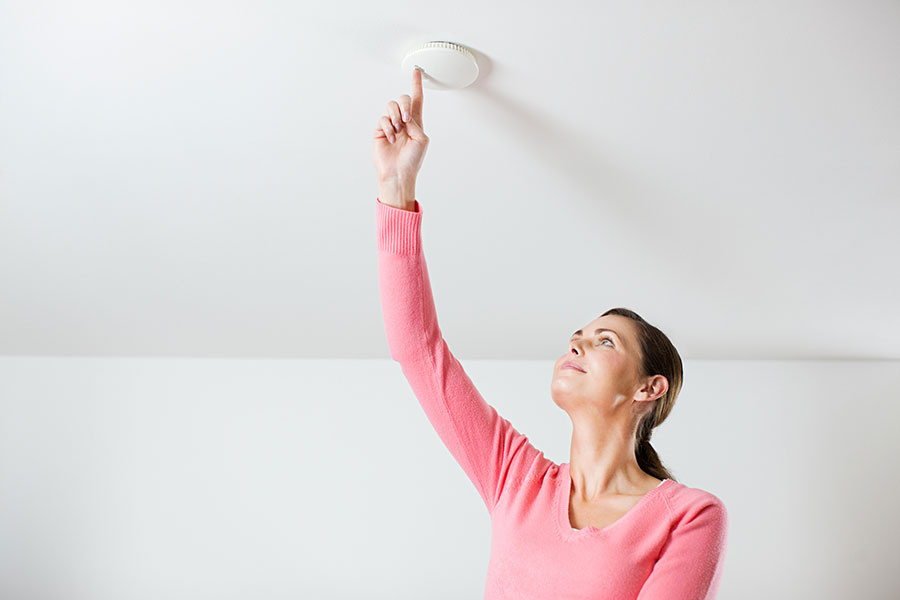Planning and prepation are easy - and essential
It’s surprising to think that a mere five bucks for an alarm battery and just a few minutes checking it once a year could one day save your life. But according to Occupational Health and Safety instructor Carrie Williams, simple things make the difference when it comes to fire safety.
Each year, there are roughly 24,000 house fires in Canada, and they’re responsible for some 3,000 injuries and almost 400 deaths. But you can reduce the risk. Spend that five bucks, take those few minutes, and consider this advice from Williams.
Put the right alarms in the right places

There is no single alarm for every situation, Williams says. “There are different ones out there.” If you choose to put one in the kitchen, for example, consider a heat sensor rather than a smoke detector so as not to set it off unnecessarily. They are also good in case of electrical fires, she adds, when smoke may not be readily apparent.
Williams' top recommendation is to use multifunction alarms, placing at least one on each level of a house (more for large houses, so as to be audible throughout). Put one in the garage, too. They detect smoke, heat, carbon monoxide and sometimes even the flicker of flames.
“It’s more expensive but in my opinion it’s the best one,” says Williams.
"When you’re sleeping you don’t hear that alarm.”
It also helps to have an alarm that speaks. Rather than infiltrating your dream as an obnoxiously tweeting bird, it can be a bird that tweets obnoxiously and says your name.
“It's proven that when you’re sleeping you don’t hear that alarm,” says Williams. “But if you hear a name with it, it rouses your brain quicker.”
Set but don’t forget

At home, test your alarms annually. “You’re checking to make sure the alarm is audible,” says Williams.
Often, this is just a matter of pushing a button, but read the instructions to ensure you’re doing it properly. Change the batteries while you’re at it.
Involve the family in fire drills

“I have so much fun with my fire drills,” says Williams. She buys smoke bombs from paintball supply stores and sets them up outside the house on pie plates. “I say to the kids, ‘Anywhere there’s coloured smoke, you can’t go out.’”
She tells them to make sure the doors to their rooms are closed behind them, to leave their electronics, to grab the pet only if possible. It’s an opportunity to talk about what to do before anything ever actually needs to be done.
“I have so much fun with my fire drills.”
“And talk to little ones,” she adds, “so they’re not thinking they have to hide from a fire. That’s the natural instinct.” Consider involving them in the planning by having them draw out the floor plan and possible exit paths, suggests Williams.
Agree upon a meeting point outside, “so everybody knows where they should be going in an emergency.” The Williams’ family car is always outdoors, making for a convenient place to gather, climb in and keep warm. A previous conversation with the neighbour has made that home another muster point if necessary.
Don’t start fires

In her classes, “the biggest thing I talk about is prevention,” says Williams.
The kitchen is a hotspot for house fires, whether they start from appliances left on or as grease fires. Bedrooms contribute as well, Williams adds. Cell phones might overheat when left to recharge under a pillow overnight. If candles are left unattended, living rooms can be just as scary at Christmas as on Halloween. Cigarettes, too, continue to rank high as common fire starters, along with lighters left lying about for kids to misuse.
“There’s a whole realm of things that we could get into,” says Williams. Be mindful.
Know your fire extinguishers but don’t rely on them
Like alarms, fire extinguishers should be available on each level of your home. Consider having an extra one in the kitchen and ensure that it is rated for grease fires, which can explode when exposed to water.
“You can get third-degree burns pretty quickly from that,” says Williams. Look for what’s known as an ABC multipurpose extinguisher.
“If you haven’t been taught how to use it, a fire extinguisher is actually quite useless.”
Don't rely heavily on this equipment, Williams adds. “If you haven’t been taught how to use it, a fire extinguisher is actually quite useless.” What’s more, they tend to contain only enough fire retardant to deal with a small fire. Struggling to figure it out may mean struggling against being overcome by toxic fumes from the materials burning around you.
“The more important thing is that you need to get yourself and everybody else out,” says Williams. “A place can go up so fast.”
Banner image Yulia Buzaeva/istockphoto.com